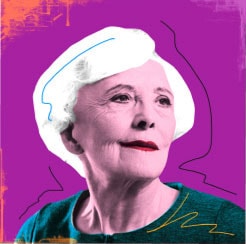Should You Adopt an 80-Year-Old?
February 1, 2019Our Brains Need Exercise, Too
March 12, 2019
A breakdown of the various offerings and where insurance fits in
By Lisa Fields
After a stroke, only about 10 percent of people recover almost completely without intervention. For everyone else, therapy is a crucial part of the recovery process. Whether you need physical, occupational and/or speech therapy following a stroke depends on your needs, but the goal is the same: to help you regain control of your body and be independent once again. The therapy you receive should be tailor-made to suit your lifestyle.
“Is the goal returning to driving or returning to work, or (is the person) a retiree who needs to take care of their own bodily functions and participate in playing with a grandchild?” says Glen Gillen, professor and director of programs in occupational therapy at Columbia University in New York and a fellow of the American Occupational Therapy Association.
Kinds of Rehabilitation Facilities
Most stroke patients stay in the hospital for five to six days. Their therapy needs are assessed within the first two days, and therapy may begin on the second. Some patients are sent home from the hospital right away. They may receive outpatient therapy sessions three times a week or get therapy at home from visiting nurses or therapists.
“If they’re higher-functioning, they can potentially go to outpatient therapy, if they have the means to get there,” Gillen says. “That is a challenge for many.”
Many stroke patients are discharged from the hospital to inpatient rehabilitation facilities, where they receive therapy at an intensity that’s best for their needs, based on the severity of the disability. Some go to acute inpatient rehab facilities, which offer the most intense therapy for the most responsive patients. Those with a greater degree of impairment may be sent to “subacute rehab” facilities, where the therapy isn’t as intense as acute rehab.
At acute rehab facilities, “people are guaranteed a minimum of three hours of therapy a day, and a physician visits six days a week,” says Dr. Alexander Dromerick, professor of rehabilitation medicine and neurology and chairman of rehabilitation medicine at Georgetown University Medical Center in Washington, D.C. “(At a subacute facility), they may get a few minutes a day, up to two hours a day, of therapy, and a physician visits every few weeks. They’re very different levels of intensity of care.”
Patients who are making great strides in a subacute facility might be moved to an acute facility for more intense therapy. Those who don’t have the endurance to tolerate an acute facility’s therapy, might be transferred to a subacute facility. “A subacute unit can be a way station back to the community,” Dromerick says, “or it can be a way station to go to a nursing home for the long term.”
Types of Therapy for Stroke Patients
Stroke patients often need physical therapy to strengthen their muscles, retrain their sense of balance and coordination and relearn certain movements. They may need occupational therapy to ensure they can do the tasks associated with daily living, like getting dressed, feeding themselves, showering or relearning skills necessary to return to work. Speech therapy also might be required to relearn how to speak or swallow food.
“Sometimes occupational therapists and physical therapists work together, but occupational therapists focus more on mobility activities that have to do with returning to work or returning to their role in their family or community,” says Carolee Winstein, professor of biokinesiology and physical therapy and director of the Motor Behavior and Neurorehabilitation Laboratory at the University of Southern California. “Physical therapists work on fundamental skills that are needed to be functional in their particular life, whatever it is. We work a lot on mobility. We teach people a lot about the importance of remaining physically active.”
Physical therapists help patients overcome physical challenges — this includes when a stroke has weakened or partially paralyzed one side of the body. Medical professionals refer to that side as “paretic.”
“If they’re having trouble reaching and grasping with their paretic side, I have them do it with their less paretic side to remind them what it should feel like,” Winstein says. “A lot of motor skills are implicit — we don’t think; we do it automatically.”
Occupational and speech therapists also address cognitive challenges.
“We consider most tasks physical, like dressing yourself, (but) all tasks that we do across the day have a cognitive component,” Gillen says. “With getting dressed, it’s the sequence of the clothing: which goes on what body part, which goes on first. If cognition is involved after a stroke, it’s a time-consuming process. We know it will take much longer, much more repetition of practice to get them there.”
Insurance Plans Could Limit Therapy
Health insurance may limit how much therapy a person can receive during a single calendar year or during his or her lifetime. If a person can afford to pay out of pocket, he or she may continue therapy without interruption. Otherwise, many therapists offer plans that patients can follow at home or at a fitness center either on their own or with the help of a family member, friend or personal trainer.
“You can keep working on the stroke problems indefinitely,” Dromerick says.
Therapists hope to get stroke patients functioning independently again, even after their sessions are complete.
“They may need a cane and a brace, but (we teach) them how to navigate with their disability so their disability does not become a barrier in their participation of being active,” Winstein says. “If there are certain things they can’t do, we show them what they can do and get them to work on those things.”
To learn more about stroke rehab and recovery, check out the American Stroke Association’s website.
By Lisa Fields
Lisa Fields is a writer who covers psychology and health matters as they relate to the workplace. She publishes frequently in WebMD and Reader’s Digest.

